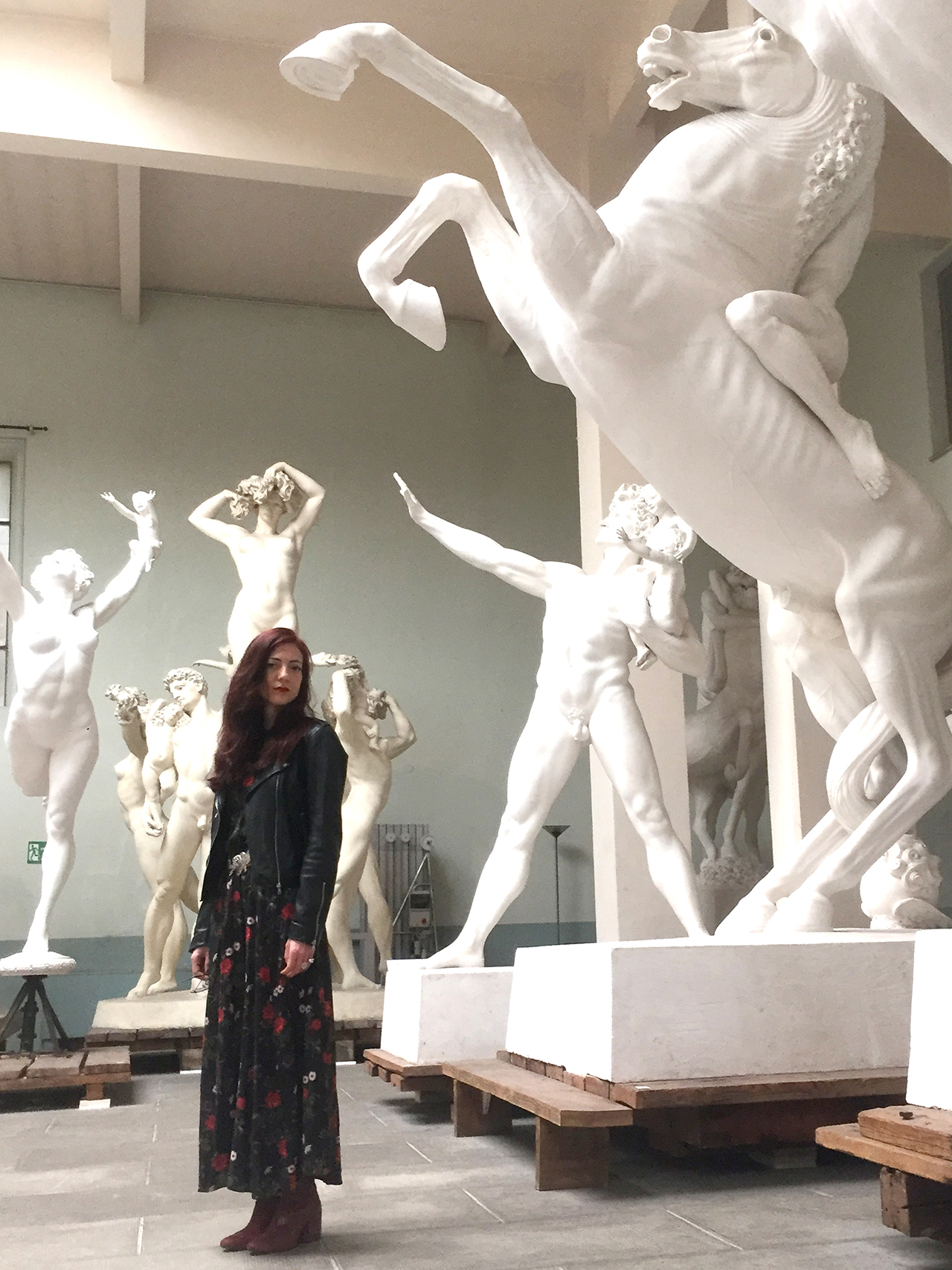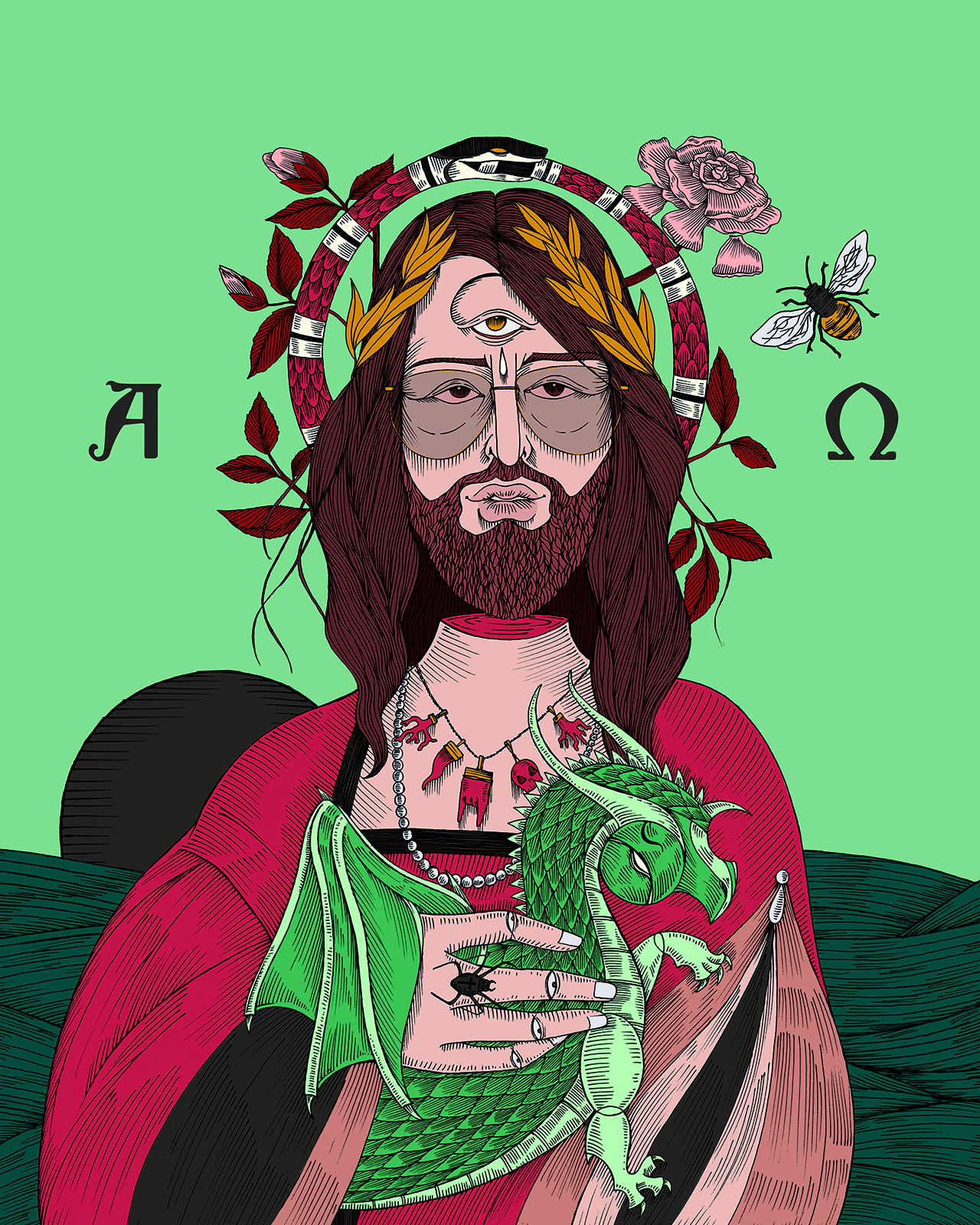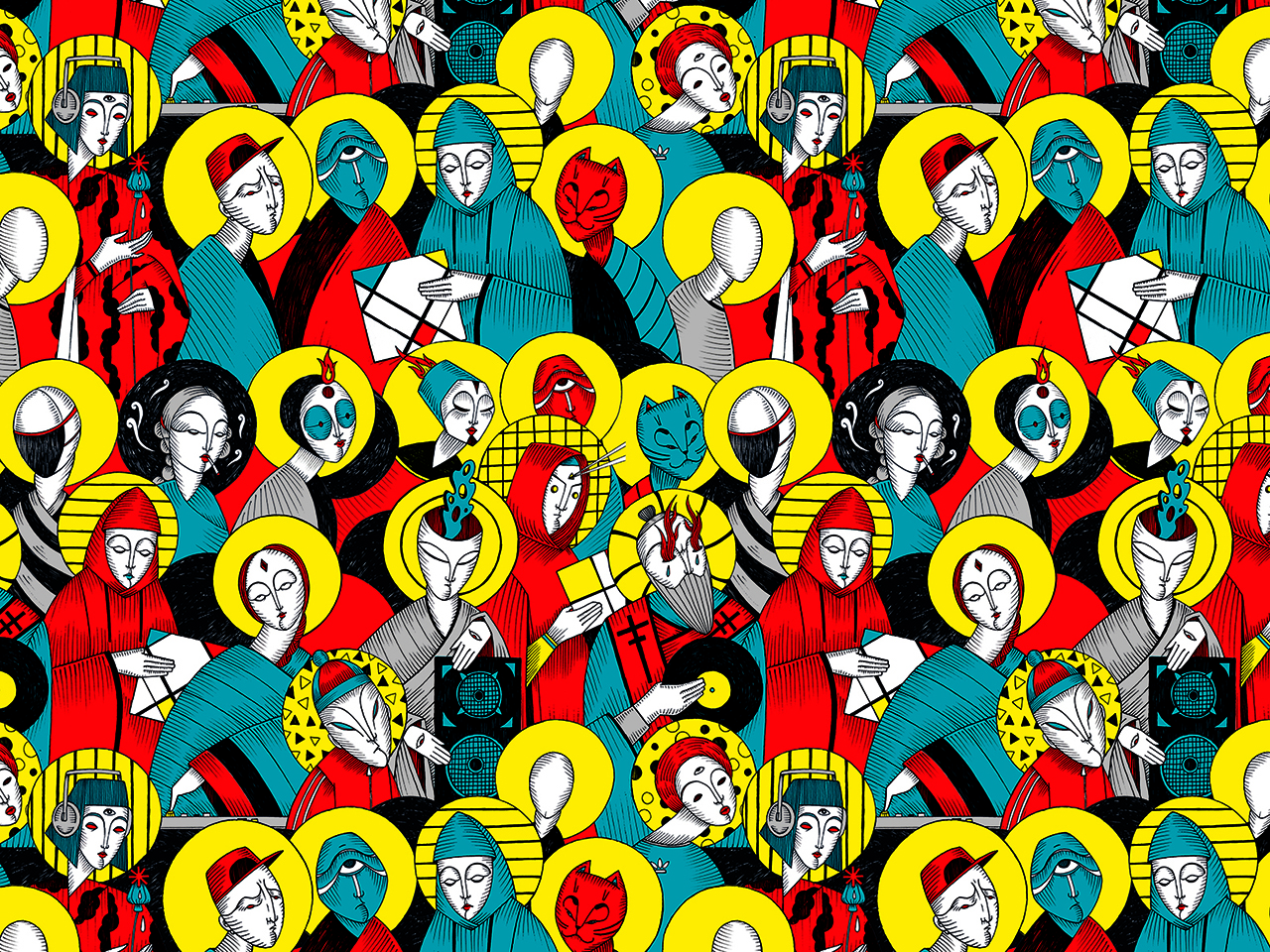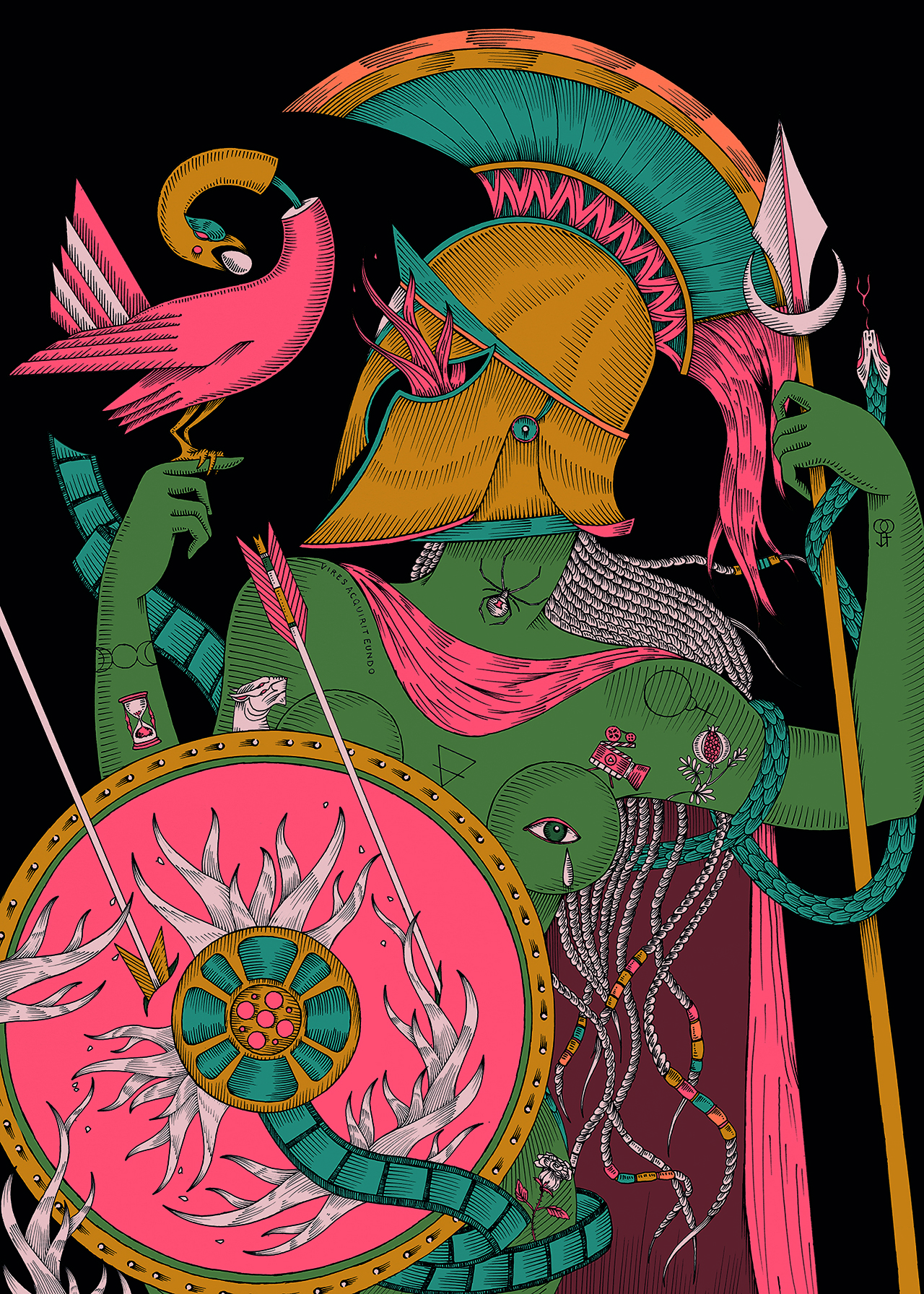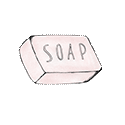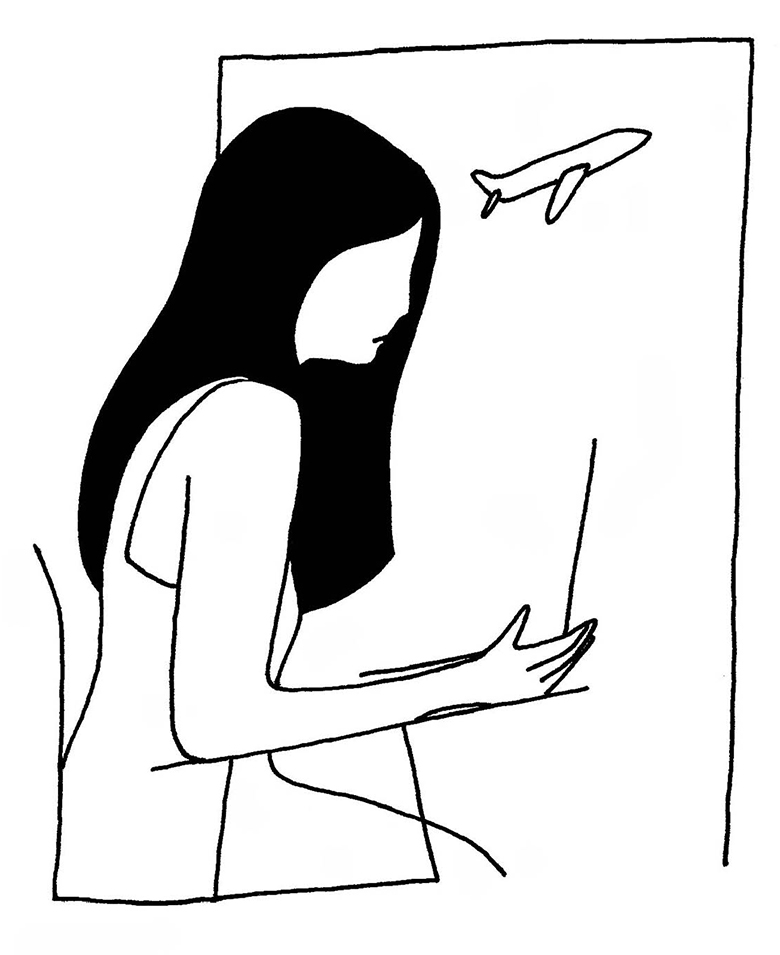#TheMysticIssue
Let's talk
MYSTICAL GIRLS
// In conversation with Elisa Seitzinger, whomst work is charged with mystic and esoteric symbolism
AN INTERVIEW BY NAOMI ACCARDI
Growing up in Italy, you don’t really have a choice when it comes to being bombed with religious inputs left and right.
The big stained glass windows from your local church, the flimsy holy cards printed on that horrible glossy paper or the badly designed Virgin Mary posters at your grandma’s house.
History teachers are big on Medieval stories, while in your literature class you are forced to read The Name of The Rose, which, although it comes much later in human’s timeline, it pushes your brain to picture mysterious, dark secret passages cutting through the grey stone walls of a monastery and laborious monks curved over thinly handwritten volumes, full of colorful miniature drawings.
Elisa Seitzinger made a career out of esoteric iconography after taking a trip to Sicily a few years back, where the mystic air hovering over the island forced itself into her head setting a copious amount of obscure figures free.
Here she felt the need to connect her brain to her hand and put a pencil down on a piece of paper and start drawing.
After traveling the world in pursuit of an education pertinent to her passion and current job, she settled in Turin where she teaches morphology at IED (Istituto Europeo del Design).
I asked her a few questions to learn more about her vision and whimsical world, where pencil, ink and digital color collide to create fantastic illustrations charged with esoteric power.
*
*
*
Naomi. How did you get close to illustration and when was it that you realised it was the career path you wanted to follow?
Elisa. Illustration is more than a passion for me. I would say it’s a platform for speech.
Drawing is how I express myself the best. It allows me to both be introspective and expansive at the same time.
Actually, it’s a necessity. It’s the smartest way to give shape to my thoughts and keep in touch with my identity.
It wasn’t always like this. It started as a game, then I studied this subject and made it my profession.
Later I became an author with my own personal style.
Naomi. What is your mean of work and what technique do you use? Hand drawn then digitalised?
Elisa. I hand-draw everything. First with a pencil then I trace it with ink. I color my figures digitally because it’s more practical and allows me to meet deadlines. I like to search for precision and cleanliness when I draw with ink, however I rarely succeed completely. I don’t look down on digital artists. Afterall it’s just a technique. No technique is superior.
Naomi. Clearly your work is charged with mystic and sacred symbolism. Why this theme and characters? Was it always this way or did you passion for these subjects developed overtime?
Elisa. Symbols are the two-dimensional equivalent of a magic talisman.
They are extremely fascinating because their ancestral essence is perseverant throughout human history and although there might be variations based on the time period, they keep the same core universal meaning no matter the context.
For this reason they are perfect and artificial objects, sometimes malleable, at times ambiguous but always current or updatable.
A part from the limitless glossary of symbols I discover almost daily, my recurrent subjects are human figures.
In particular female ones.
I have a special propensity towards drawing hieratic faces, without or with too many eyes. And also animals, better if hybrid, imaginary or monstrous. Furthermore I like the botanical world. It wasn’t always like this, I followed this path in recent years.
Naomi. Are you religious? If so, do you think your relationship with the holy influences your work?
Elisa. Faith isn’t a rational matter. It’s a feeling. It has to find the soil and the right moment to root and blossom. This hasn’t happened to me yet. Unlike love, it’s not something I am particularly interested in.
When I was younger, I wrote on my school agenda “Religion is the opium of the People” (cc. Marx). I still think this but unlike then I am not opposed to its use. You just have to be careful in the dosage and abuse.
The fact that I hark back to religious iconography own of my cultural roots doesn’t make me a believer.
The point is to analyze what had a positive mark on my personal values and disconnect it from the negative experiences.
Naomi. Are there specific sites where you like to go and sketch?
Elisa. No, but there are places that are a big source of inspiration for my work.
For me, matching drawing with real life means to look for sources of inspiration.
One of my favorite activities is to look for evocative locations where I can lose time perception and the logic ruling our era, time travel or at least daydream.
This is a world made of famous and not so famous museums, crazy homes, abandoned warehouses, churches attended by the elders for most, luna parks left empty by the winter, lighthouses, dams and metaphysic tuna farms, majestic graveyards hidden in the forest.
Naomi. I see your work is heavily influenced by church stained glass and it also reminds me of old Medieval miniatured books. Are there any particular artists of that era you reference to?
Elisa. Not really. I tend to be inspired mostly by stylistic rules rather than single artists.
For example, my attention is caught by the sacred and courtly art of the Middle ages, gothic cathedrals stained glass windows and miniatured books. Not to forget are the primitive Italian and Flemish paintings, as well as Russian icons and byzantine mosaics. In addition, soteric iconography, tarots, ex-votos but also classic and visual art from the 20s and 30s.
I am also interested in contemporary art, but to be inspired I feel the need to look in the past.
Naomi. Are you interested in any other esoteric/mystic practice other than its visual representation?
Elisa. Other than visiting cemeteries, not really. I like to have my cards read sometimes but I associate it more with an introspective psychological session I engage with when I am in crisis mode. If everything is good, I’d rather not alter the balance.
Naomi. Mysticism and nature have a strong relationship. Can we find this element in your creation process? Is nature relevant to your work?
Elisa. That’s right! I grew up surrounded by greenery and animals. I love plants and I know their names, I also feel great empathy towards animals. I feel at ease in the wild, both by the sea and in the mountains. Becoming a mother reinforced this bond. Nature was always a source of awe and astonishment. These are feelings that are really close to my spirituality and definitely affect my work on some kind of subconscious level:
Naomi. Why the choice to use only 3 main colors, red yellow blue?
Elisa. Honestly I am more focused on the line rather than color. Color is super important for me, but it’s accessory to the art.
It’s mandatory for a good illustration but remains an accessory. I draw, I don’t paint.
The use of primary color was born with the need to limit myself but still obtain the most contrast utilizing timeless colors and matching them. Tarots and Bauhaus have the same color palette and I trust them.
Lately I have opened up much more in chromatic scale terms and I introduced new ingredients. I like to create specific palettes to fit the project and my client’s identity. The exclusive use of primary colors belongs to my past.
Naomi. How do you see your artwork develop in the future?
Elisa. In this period I would like to get acquainted with design. Winning the 2018 Illustri Prize under the Design Category opened my eyes on my passion for this subject. The most beautiful exhibition I saw last years was a Fornasetti retrospective at Palazzo Altemps in Rome.
Naomi. Are you self-taught or trained in illustration?
Elisa. Both. Ironically studying illustration made me aware of what I didn’t want to do in opposition to self teaching.
Naomi. What do you hope to communicate through your art?
Elisa. Hard to say, it depends on the project. Generally speaking I have an extremely cynical vision of society.
I don’t believe in popular ideals. Historically they never worked.
I strongly believe in individual strength and will-power each one of us carries.
Only with a personal conscious awakening and without external conditioning we can change things (at least what affects us directly).
For this reason, I limit myself to observe and give my vision back to the world.
Artists should have a social role and the illustrator, sometimes, is very close to an artist.
In other cases, instead, it’s more a commercial service, but not less than some artists.
*
*
*
Images courtesy of Elisa Seitzinger.
Words by Naomi Accardi.
